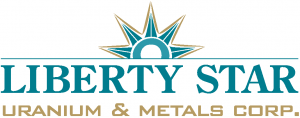
My Experience with Identifying Calderas
Part 1: Silver Bell Mountains
Jim Briscoe Liberty Star Founder/CEO/Chief Geologist
I recently read a great article in the Northern Miner titled “Eurasian rethinks Arizona’s copper riches” (7/10/2013).* My first thought was “congratulations Eurasian Minerals on your work at Copper Basin and other innovative targets.” As I read on, this article, as many others I have read, noted that explorers had moved out of Arizona decades ago because it was believed that all the large deposits had been discovered, but that savvy explorers such as Eurasian were coming back. In the case of my associate Dr. John Guilbert and I, we never left Arizona. Dr. Guilbert, one of our Directors and Technical Advisors, literally wrote the book on porphyry coppers (with Charles Frederick Park The Geology or Ore Deposits [1986] and co-authored the Porphyry Copper Model) and, as I, remain convinced that there are numerous large economically important porphyry copper/gold/moly zones throughout the Basin and Range of (southern) Arizona. I would like to share some of our experiences in this area to explain why we never left Arizona and why I believe it is up to geologists now to use Dr. Guilbert’s work along with modern geological technology to find more of Arizona’s porphyry copper riches, which are there for those who think out of the box, work carefully and imaginatively and make good geologic observations. I have been in the field with some of Eurasian’s geologists looking at some of the geologic relationships they have identified. I agree with their geologic conclusions. They certainly think outside the box as do John Guilbert and I.
My and John’s history with Arizona porphyries is extensive, and incudes as one example original geologic deductions from my structural mapping of the North Silver Bell & West Silver Bell Mountains starting in 1965 and continuing up to the 1990’s. That experience eventually led to my identification of the Tombstone and Big Chunk calderas.
My geologic work showed the West Silver Bells had been offset by about 3.5 miles to the south by a left lateral fault. Dr. Guilbert’s recognition that what was thought to be the covered west edge of the North Silver Bell ore body with diminishing alteration, for many decades, was actually the center of the ore body as indicated by secondary potassium feldspar with low sulfide and copper values, only present at the center of such ore bodies. That recognition was also the key to making assumptions about what we were actually seeing within the West Silver Bell Mountains. These observations demonstrated the west half of the ASARCO North Silver Bell ore body (and the continuation of the Silver Bell caldera rim which hosts the Silver Bell District), was lying 3.5 miles to the south in the West Silver Bells, under cover.
As a result of that recognition we engaged geochemist Shea Clark Smith to collaborate in designing a deep seeing geochem sampling program to determine if we could spot the offset porphyry bodies. He did, and we executed one of the largest known geochemical sampling programs perhaps in the world at that time or at least in North America (according to Smith). The sample area was approximately 120 square miles including control samples over the then untouched ASARCO North Silver Bell ore body. The program worked and we observed at least three and perhaps as many as nine porphyry centers. But before we could act, President Clinton declared the area and adjacent lands off limits to mining with the creation of the Ironwood Forest National Monument ostensibly to protect the desert ferruginous pygmy owl. The action was taken at the end of President Clinton’s 2nd term and encouraged by his outgoing Secretary of the Interior former Arizona Governor Bruce Babbitt, Pima County Manager Chuck Huckleberry and the Pima County Board of Supervisors. This government action cost our Company, JABA (US) Inc. about $2 million and the tax payers of Pima County (in comparison to other similar mines) perhaps $9 billion in tax and other revenue.
We lost all but our East Silver Bell target: geochemical work and shallow drilling at that time proved that the East Silver Bell target is a porphyry copper center.
The value to John, me and our shareholders was the development of a geochemical sampling system at Silver Bell which has proven itself at Big Chunk, Alaska and Hay Mountain, Arizona as well as other areas. Geochemical data combined with ZTEM electromagnetic geophysics (which had not been invented yet when Silver Bell was explored), gives us an accurate depth component for porphyry coppers. The work John, Shea and I undertook at Silver Bell that showed it was a caldera enlarged to the West Silver Bells, verified work by David Sawyer, who first identified only the North Silver Bells Caldera during his Ph.D. dissertation, and that paved the way for that interpretation at the Big Chunk caldera and the Tombstone caldera.
Many other areas are primed for exploration in Arizona and the search continues in the most dense accumulation of porphyry copper deposits known in the world. Seventeen calderas have now been identified in Arizona, most if not all associated with porphyry coppers or mineralization associated with their edges.
Jim Briscoe
July 25, 2013
*The article referenced is copyrighted and belongs to the Northern Miner. If you want to read “Eurasian rethinks Arizona’s copper riches” (Gwen Preston, 7/10/2013) you must subscribe to the Northern Miner and adhere to its copyright policy.

Greetings Mr. Brisco,
Great article, the old adage about finding ore still rings true.
I did not know that Clark Smith did such a large program, but he is certainly the fellow to do such work.
I look forward to more articles. Best of luck with Hay Mtn.
Cheers
Edward Wells
Expl Mngr Auricogold – Ocampo Mine